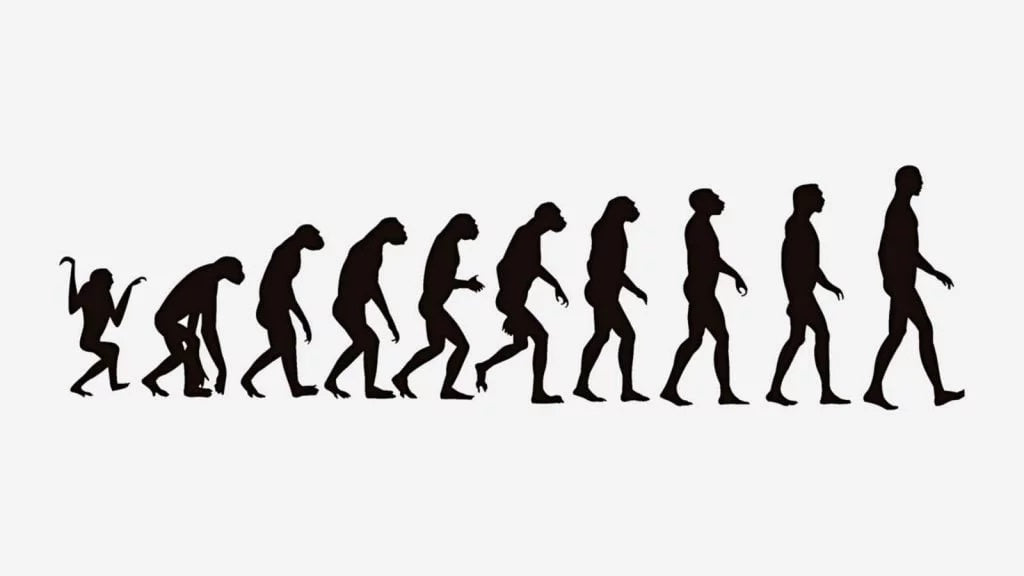Why omega fats matter
Omega fats aren’t “just another supplement.” Omega-3 and omega-6 fatty acids build every cell membrane, shape the brain and central nervous system, and provide raw materials for hormones and immune signals. In short: without a steady supply, modern humans wouldn’t be modern humans.
From shoreline to superbrain: omega-3s in human evolution
Marine foods and brain expansion
Early humans didn’t thrive on grains and sugar. Archaeological evidence points to frequent intake of small animals and marine foods—fish, shellfish, reptiles, eggs—which delivered long-chain omega-3s (EPA & DHA). Because the human brain is ~60% fat, these fats became structural staples:
-
DHA: core building block of brain and retina membranes
-
EPA: key modulator for inflammatory and neural signaling
As access to shoreline foods grew, so did brain capacity. Many researchers argue a seafood-rich diet provided the concentrated energy and brain-specific fats needed for rapid cognitive evolution.
The ancestral fat ratio
For most of prehistory, diets hovered around a ~1–2:1 omega-6:omega-3 ratio—a balance shaped by wild plants, game, and marine life. Our biology still “expects” that balance.
Agriculture changed everything: how the ratio flipped
Grains in, greens and seafood out
The rise of farming pushed us toward grain-heavy diets (wheat, rice, barley, corn) and grain-fed livestock. Result:
-
More omega-6 (from grains and seed oils)
-
Less omega-3 (from grass, wild plants, and seafood)
Modern Western patterns now average >15:1 omega-6:omega-3, a dramatic departure from our evolutionary norm.
Feed matters: grass-fed vs grain-fed
What animals eat changes what you eat. Grass-fed and pastured meats deliver a better omega-6:omega-3 profile than grain-fed meats—and can meaningfully improve your plasma ratio in weeks.
Why the omega-6:omega-3 balance drives health
Omega-6 and omega-3 share the same enzymes to make eicosanoids—the short-lived messengers that turn inflammation on and off.
-
Excess omega-6 → more arachidonic acid (AA) → pro-inflammatory signaling
-
Adequate omega-3 (EPA/DHA) → balances eicosanoids → resilient, well-regulated responses
That balance influences:
-
Cardiovascular health (vessel function, lipids, plaque stability)
-
Brain & mood (membrane fluidity, neurotransmission)
-
Immune regulation (autoimmunity, allergy, skin)
-
Musculoskeletal health (joints, bone remodeling)
Skewed toward omega-6 and low in omega-3, modern intakes are consistently associated with higher risk of CVD, depression, dementia, inflammatory and neurodevelopmental disorders, and other chronic conditions.
EPA & DHA: the headline omega-3s
-
EPA (eicosapentaenoic acid): Supports inflammation resolution, vascular function, and mood signaling.
-
DHA (docosahexaenoic acid): Primary structural fat of brain and retina; essential during pregnancy, infancy, and early childhood.
Plant-based ALA (from flax/chia/walnuts) is healthy, but conversion to EPA/DHA is limited and further constrained by micronutrient deficits common in modern diets.
How to rebalance your fats (practical steps)
1) Add direct EPA/DHA sources
-
Fatty fish: salmon, sardines, mackerel, herring, trout (2–3 servings/week)
-
Algae oil (vegan DHA; many formulas now include EPA)
-
Tinned fish (budget-friendly, portable)
2) Improve the baseline
-
Choose grass-fed/pastured meats & dairy when possible
-
Cook with olive, avocado, or high-oleic oils; limit seed oils high in omega-6 (e.g., sunflower, corn, soybean, safflower)
-
Eat leafy greens, herbs, and sea vegetables regularly
3) Match intake to life stage
-
Pregnancy & breastfeeding: prioritize DHA (with some EPA)
-
Childhood: ensure steady DHA; consider more EPA for immune/behavioral support
-
Adults: an EPA-leaning or balanced EPA+DHA pattern supports heart, brain, skin, and joints
-
Healthy aging: EPA-forward, with some DHA for structural support
4) Measure, don’t guess
Use an Omega-3 Index (RBC EPA+DHA) test to see where you stand, then retest in ~3 months to confirm changes.
Key takeaways
-
Omega-3s (EPA & DHA) shaped human brain evolution and still anchor our cellular biology.
-
Our modern omega-6 heavy diet disrupts inflammatory control and cellular function.
-
Rebalance by eating seafood (or algae oil), choosing grass-fed options, and dialing down excess seed oils.
-
Test and tailor your intake—what you measure, you can improve.
Re-align your fats with your biology, and the benefits compound: clearer thinking, steadier mood, calmer inflammation, and a more resilient heart and brain.




